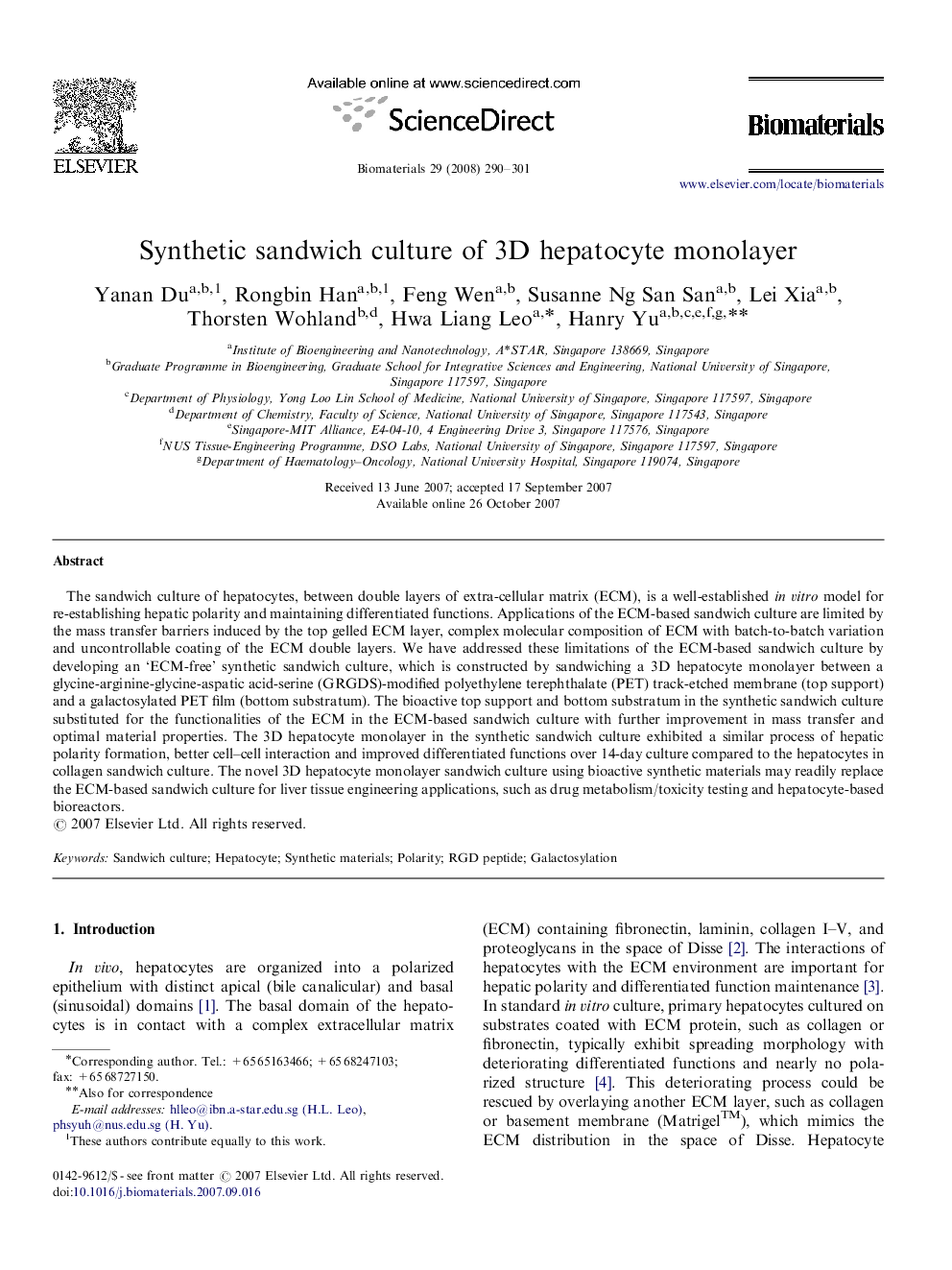| Article ID | Journal | Published Year | Pages | File Type |
|---|---|---|---|---|
| 10269 | Biomaterials | 2008 | 12 Pages |
The sandwich culture of hepatocytes, between double layers of extra-cellular matrix (ECM), is a well-established in vitro model for re-establishing hepatic polarity and maintaining differentiated functions. Applications of the ECM-based sandwich culture are limited by the mass transfer barriers induced by the top gelled ECM layer, complex molecular composition of ECM with batch-to-batch variation and uncontrollable coating of the ECM double layers. We have addressed these limitations of the ECM-based sandwich culture by developing an ‘ECM-free’ synthetic sandwich culture, which is constructed by sandwiching a 3D hepatocyte monolayer between a glycine-arginine-glycine-aspatic acid-serine (GRGDS)-modified polyethylene terephthalate (PET) track-etched membrane (top support) and a galactosylated PET film (bottom substratum). The bioactive top support and bottom substratum in the synthetic sandwich culture substituted for the functionalities of the ECM in the ECM-based sandwich culture with further improvement in mass transfer and optimal material properties. The 3D hepatocyte monolayer in the synthetic sandwich culture exhibited a similar process of hepatic polarity formation, better cell–cell interaction and improved differentiated functions over 14-day culture compared to the hepatocytes in collagen sandwich culture. The novel 3D hepatocyte monolayer sandwich culture using bioactive synthetic materials may readily replace the ECM-based sandwich culture for liver tissue engineering applications, such as drug metabolism/toxicity testing and hepatocyte-based bioreactors.
